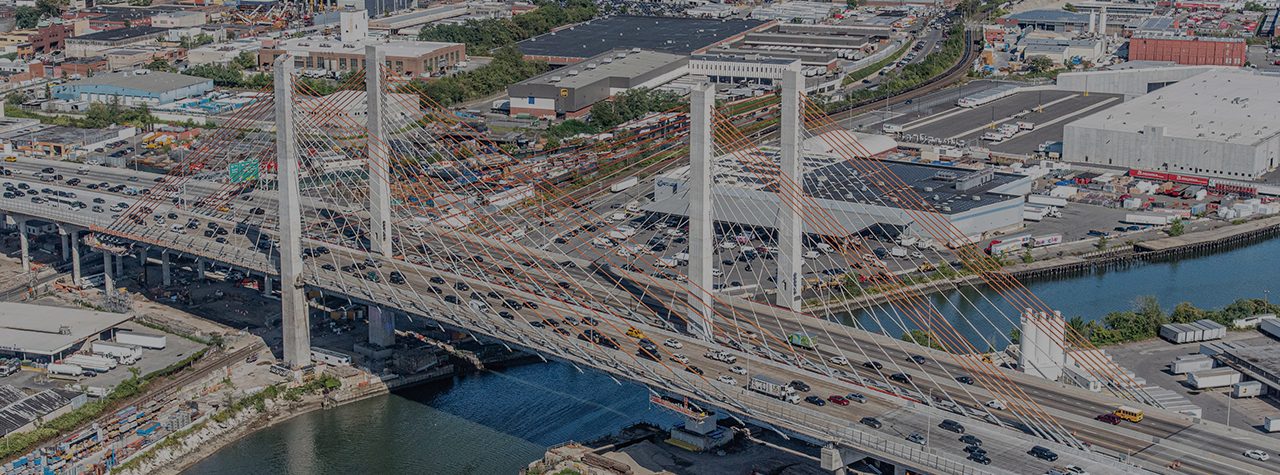Georgia, Inland Waterways, National Category
Startup Uses Drone for Cleaning Water, Collecting Data


There are more than 617,000 bridges across the United States. Currently, 42% of all bridges are at least 50 years old, and 46,154, or 7.5% of the nation’s bridges, are considered structurally deficient, meaning they are in “poor” condition. Unfortunately, 178 million trips are taken across these structurally deficient bridges every day. In recent years, though, as the average age of America’s bridges increases to 44 years, the number of structurally deficient bridges has continued to decline; however, the rate of improvements has slowed. A recent estimate for the nation’s backlog of bridge repair needs is $125 billion. We need to increase spending on bridge rehabilitation from $14.4 billion annually to $22.7 billion annually, or by 58%, if we are to improve the condition. At the current rate of investment, it will take until 2071 to make all of the repairs that are currently necessary, and the additional deterioration over the next 50 years will become overwhelming. The nation needs a systematic program for bridge preservation like that embraced by many states, whereby existing deterioration is prioritized and the focus is on preventive maintenance.
Download Report
in all 50 states,
still need repair and preservation work.
of structurally deficient bridges for the past two years
has slowed considerably to just 0.1% annually* 10% of bridges are posted for load.
Over the past decade, a concerted effort has been made involving all levels of government to reduce the number of structurally deficient bridges across the nation. While structurally deficient bridges are not inherently unsafe, they require substantial investment in the form of replacement or significant rehabilitation, and they present a higher risk for future closure or weight restrictions.
Source: U.S. Department of Transportation, Federal Highway Administration, InfoBridge: Data: https://infobridge.fhwa.dot.gov/Data/Dashboard
In recent years, all levels of government have prioritized bridge repairs through investments. To make many of these investments, 37 states have either increased or reformed their gas tax since 2010. However, despite states’ increased investments, overall spending in the country’s bridges remains insufficient.
The most recent Conditions and Performance Report from the Federal Highway Administration estimates the bridge backlog for repairs for existing bridges at $125 billion and also estimates that we need to increase spending on bridge rehabilitation by 58% from $14.4 billion annually to $22.7 billion annually if we are to improve the condition.

Source: U.S. Department of Transportation, Federal Highway Administration, InfoBridge: Data: https://infobridge.fhwa.dot.gov/Data/Dashboard
As the nation’s bridges continue to age, America’s emphasis has slowly evolved from building new bridges to maintaining existing ones. New technologies, materials, evaluation techniques, and construction methods have advanced in recent years to meet this challenge. Additionally, the industry manual provided by the American Association of State Highway and Transportation Officials now requires new bridges to be designed with a 75-year service life, compared to the customary 50 years, meaning bridges are now being built to last longer.
Bridge engineers are now using materials such as ultra-high-performance concrete, corrosion-resistant reinforcement, high-performance steel, composites, and improved coatings to increase resilience and add durability, higher strengths, and longer life to bridges. Additionally, minimal-impact, non-destructive evaluation methods are being used more widely, while new technologies such as infrared thermography, ground-penetrating radar, and remotely operated surveillance devices like flying and submersible drones are being deployed to assess bridge conditions and to facilitate safer, more efficient engineering decisions. Additionally, engineers are designing “living bridges” where sensors are being embedded into new and existing structures to provide continuous feedback on structural conditions.
Finally, prefabricated bridge elements and Accelerated Bridge Construction are being used with more frequency to reduce the amount of time traffic needs to be disrupted while a bridge is repaired or replaced. All of these innovations, technologies, and evaluation methods are effectively allowing engineers to identify problems earlier, increase the lifespan of the nation’s bridges, stretch limited resources, and prioritize public safety.
Our nation’s bridges comprise a vast, complex system of unique structures, each of which is deteriorating at its own pace and in need of specific treatments at specific times. In order to manage this large array of assets, states are now required to develop and use Transportation Asset Management Plans (TAMPs).
The federally required TAMPs outline a systematic, data-based approach for states to manage their inventories. Each TAMP is required to predict and set targets for the bridges that will be in good or poor condition over the next 10 years. Strategic asset management is one of the most cost-effective ways that the nation is addressing its aging and deteriorating bridge inventory.

As investments are made in the nation’s bridges, a systematic approach should be taken to make them more resilient. Many of the country’s older bridges are susceptible to extreme weather events and more prevalent flooding, which can result in overtopping, washout, and other storm-related damage. In fact, nearly 21,000 bridges were found to be susceptible to overtopping or having their foundations undermined during extreme storm events. In seismic regions, earthquakes are a significant threat, and a bridge’s ability to withstand these extreme events is a significant safety issue.
Increase funding from all levels of government to continue significant bridge repair, rehabilitation, and replacement.
Prioritize rehabilitating and preserving bridges in fair condition as these bridges can often be preserved at a fraction of the cost of replacement if the work is performed in a timely manner. This approach can reduce the number of structurally deficient bridges to below 5%, decrease the maintenance backlog, and address the large number of bridges that have passed or are approaching the end of their design life.
Develop a balanced approach for our current aging bridge inventory that emphasizes preservation, rehabilitation, and replacement where necessary, while also setting aside funding for critical operation and maintenance. Bridge owners should consider the costs across a bridge’s entire lifecycle (LCCA) to make smart design decisions and prioritize maintenance and rehabilitation.
Fix the Highway Trust Fund by raising the federal motor fuels tax by five cents a year over five years. In addition, to ensure long-term sustainable funding for the federal surface transportation program, the current user fee of 18.4 cents per gallon on gasoline and 24.4 cents on diesel should be tied to inflation to restore its purchasing power, fill the funding deficit, and ensure reliable funding for the future.
Urge states to prioritize investments on bridges that are most critical, for example those that experience the highest daily traffic volume, are on critical freight corridors, or are on evacuation routes, and develop multi-variable prioritization formulas for the bridges in their state.
Ensure state funding mechanisms (motor fuels taxes or other) are sufficient to fund needed investment in bridges.
Advise states and the federal government to consider long-term funding solutions for transportation infrastructure and potential alternatives to motor fuels taxes, including mileage-based user fees.
Continue to fund research into the use of innovative technologies, materials, and construction techniques.
Effective January 1, 2018, the Federal Highway Administration (FHWA) changed the definition of “structurally deficient” as part of the final rule on highway and bridge performance measures published on May 20, 2017, pursuant to the 2021 federal aid highway bill Moving Ahead for Progress in the 21st Century Act (MAP-21). Two measures that were previously used to classify bridges as structurally deficient are no longer used. This includes bridges where the overall structural evaluation was rated poor or worse condition, or with insufficient waterway openings. The new definition limits the classification to bridges where one of the key structural elements — the deck, superstructure, substructure, or culverts — are rated in poor or worse condition. Based on the new definition of structurally deficient, there are 6,533 bridges that would have been classified as structurally deficient in 2017 but did not meet the new criteria in 2018.
American Road and Transportation Builder’s Association, Bridge Report, 2020.
U.S. Department of Transportation, Federal Highway Administration, National Bridge Inventory, 2019.
U.S. Department of Transportation, National Bridge Inventory, 2020.
U.S. Department of Transportation, Federal Highway Administration, InfoBridge: Data.
U.S. Department of Transportation, Federal Highway Administration, “Status of the Nation’s Highways, Bridges, and Transit Conditions and Performance Report,” Chapter 7 – Capital Investment Scenarios – Highways, 23rd Edition.
U.S. Department of Transportation, Federal Highway Administration, InfoBridge: Data.
U.S. Department of Transportation, Federal Highway Administration, MAP-21 Comprehensive Truck Size and Weight Limits Study, April 2016.
PHOTO ATTRIBUTES
